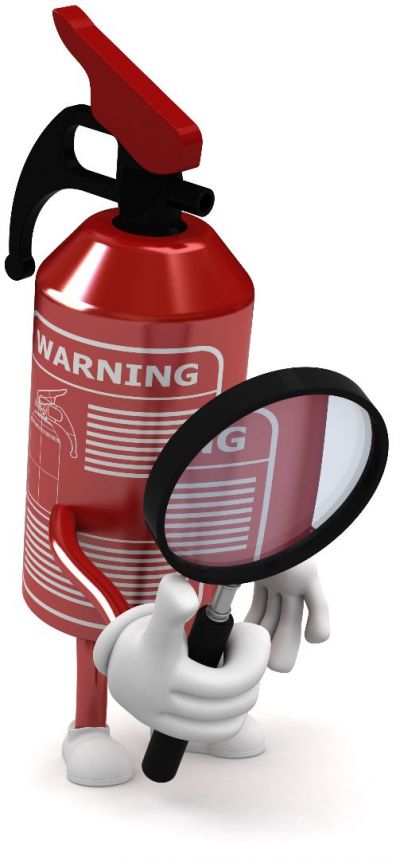Frequently Asked Questions (click on the question for the answer)
Basic fire fighting tips
This page is intended to provide individuals with general information pertaining to some basic fire fighting tips.
All fires can be very dangerous and life threatening. Your safety should always be your primary concern when attempting to fight a fire.
Before deciding to fight a fire, ensure that:
- The fire is small and not spreading. It is possible for a fire to double in size within one minute.
- You have the proper fire extinguisher for what is burning.
- The fire won't block your exit if you can't control it. A good way to ensure this is to keep the exit at your back.
- You know your fire extinguisher works. Inspect extinguishers once a month for dents, leaks or other signs of damage. Assure the pressure is at the recommended level. On extinguishers equipped with a gauge, the needle should be in the green zone - not too high and not too low.
- You know how to use your fire extinguisher. There may not be enough time to read the instructions when a fire occurs.
How to Fight a Fire Safely:
- Always stand with an exit at your back.
- Stand several feet away from any fire, moving closer once the fire starts to diminish.
- Use a sweeping motion and aim at the base of the fire.
- If possible, use a "buddy system" to have someone back you up or call for help if something goes wrong.
- Be sure to watch the area for a while to ensure it does not re-ignite.
Never Fight a Fire If:
- The fire is spreading rapidly. Only use a fire extinguisher when the fire is in its early stages. If the fire is already spreading quickly, evacuate and call the fire department.
- You don't know what is burning. Unless you know what is burning, you won't know what type of fire extinguisher to use. Even if you have an ABC extinguisher you can't be certain there could be something that may explode or produce highly toxic smoke.
- You don't have the proper fire extinguisher. The wrong type of extinguisher can be dangerous or even life threatening.
- There is too much smoke or you are at risk of inhaling smoke. Seven out of ten fire-related deaths occur from breathing poisonous gases produced by the fire.
Any sort of fire will produce some amount of carbon monoxide, the most deadly gas produced by a fire. Materials such as wool, silk, nylon and some plastics can produce other highly toxic gases such as carbon dioxide, hydrogen cyanide, or hydrogen chloride. Beware - all of these can be fatal.
Smoke inhalation or exposure to fire itself can be life threatening so get educated about the basics in CPR and burn treatment.
Disclaimer: This page contains guidelines for the use of fire extinguishers and is not meant to be a comprehensive reference. There are many circumstances that these guidelines cannot foresee and you should recognise the inherent danger in relying solely on this information. For more information contact the NZFPA or www.fire.org.nz
Bulk Orders
If you have an order of 10 units and over, please contact us for our discounted prices.
Do our fire extinguishers meet New Zealand standards?
Yes, all our extinguishers comply to the Australian & New Zealand standards 1841:1-6.
Do we service fire extinguishers?
We don't offer servicing but depending on your location we are able to supply contact details for a certified company in your area.
What extinguisher do I require?
Please email us with your query, include a phone number and we will call to discuss
How do I know your extinguishers were manufactured recently?
All our extinguishers are supplied with the month and year of manufacture stamped in to the cylinder of each extinguisher. You can buy with confidence knowing you are purchasing the very latest stock.
Will the fire extinguisher be pressurised when I receive it?
All our extinguishers are delivered pressurised.
